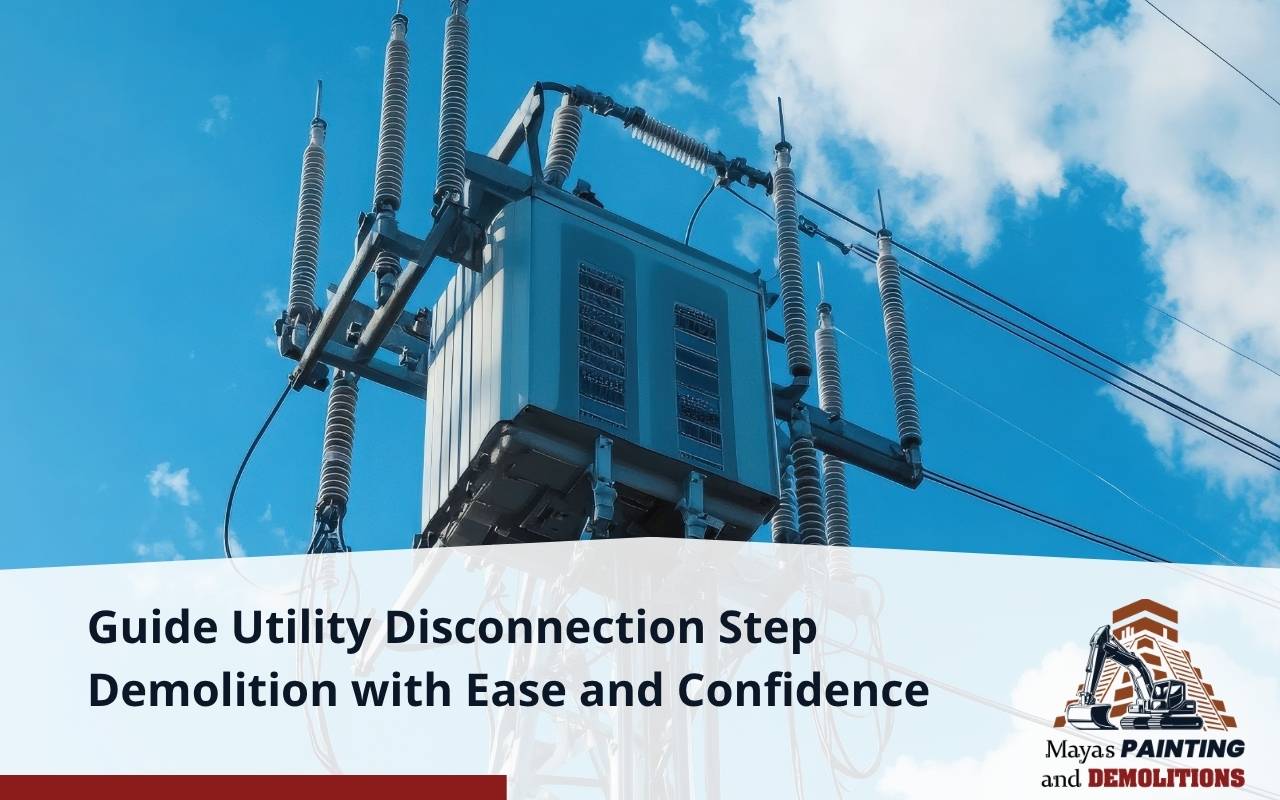
Demolishing a building can feel overwhelming, especially when it involves utility disconnection step. Remove fear and embrace the process confidently as we guide you through safe steps. Each step is crucial; a misstep could lead to hazards. This guide will demystify the utility disconnection step before demolition, making it accessible and less daunting. Proper utility disconnection ensures safety and smooth progress. We’ll cover notifying service providers, understanding infrastructure, and maintaining safety. Follow our guide to prepare for demolition with greater ease.
Importance of Proper Utility Disconnection
Proper utility disconnection is vital for any demolition project. Leaving gas, water, or electricity active poses serious hazards. Live wires may cause shocks, and gas leaks can lead to explosions. Open water pipes can flood the site, causing delays. Following a clear utility disconnection step minimizes accidents and costly setbacks. Proper planning also keeps your project on schedule and within budget. Many jurisdictions require disconnection proof for demolition permits. Documenting utility disconnection streamlines inspections and ensures legal compliance.
Notifying Service Providers
- Inform gas, water, and electric companies ahead of the planned start date.
- Provide account numbers, property address, and demolition permit details.
- Request final meter readings and confirm disconnection dates in writing.
- Keep all notifications for documentation and inspection purposes.
Aligning service providers clears the path for your utility disconnection step. For further guidance, visit Utility Disconnection Guide.
Understanding Existing Infrastructure
Before disconnecting utilities, map the existing infrastructure. Collect blueprints or site plans showing utility lines. Conduct a physical inspection and mark visible entry points. If needed, hire a professional locator service to find buried lines. Understanding infrastructure helps prevent accidental damage and ensures a smooth utility disconnection step.
- Gather and review all available building blueprints or utility maps.
- Inspect visible service entries such as meters, valves, or conduits.
- Mark underground utilities using professional locating services before excavation.
Ensuring Safety Precautions
- Equip crews with PPE, including hard hats, gloves, and steel-toed boots.
- Use barricades and post warning signs around high-risk zones.
- Keep fire extinguishers, first-aid kits, and spill containment tools ready.
- Conduct daily briefings to review the utility disconnection step.
Proper safety measures reduce risks during demolition. Learn more by contacting us through Contact Page.
Securing Necessary Permits
Obtaining permits is mandatory before touching utility lines. Submit applications with proof of notifications to service providers. Some agencies require site plans or environmental impact studies. Approval ensures inspectors allow your utility disconnection step and demolition work. Display permits clearly at the site to avoid legal issues.
- Submit applications early to prevent project delays.
- Attach documentation showing service provider notifications and utility plans.
- Keep printed permits on-site for inspection at all times.
Coordinating with Demolition Team
Effective teamwork ensures smooth demolition. Create a timeline including utility shutoff dates, inspections, and demolition start. Hold kickoff meetings with project managers, supervisors, and crew leads. Define when the utility disconnection step is complete. Clear communication through apps or shared calendars keeps teams updated and reduces downtime.
- Schedule coordination meetings to align timelines and responsibilities.
- Use shared digital tools for real-time updates on disconnection progress.
- Confirm completion of each utility disconnection before demolition begins.
Proper Disconnection Procedures for Gas Utilities
Shutting off gas requires a licensed technician. Locate the main shutoff valve and notify the provider for a safe shutdown. The technician depressurizes the line, caps or removes pipes, and provides a certificate. This step ensures a safe utility disconnection step for gas before demolition.
Proper Disconnection Procedures for Water Utilities
Shut off the main water valve, release pressure by opening faucets, and drain exterior spigots. Cap or remove exposed pipes. For long delays, use antifreeze in traps. Obtain a certificate from the water department to complete the utility disconnection step and ensure compliance.
Proper Disconnection Procedures for Electricity Utilities
Hire a qualified electrician to switch off the main breaker. Lock it out and verify with a voltage tester. Remove or isolate service wires, and let the utility technician disconnect power at the street. Collect the disconnection notice to document the electricity utility disconnection step, reducing fire and shock risks.
Frequently Asked Questions
Why is utility disconnection important before demolition?
Disconnecting utilities prevents hazards like shocks, explosions, and flooding, ensuring safety and compliance.
Who should handle utility disconnection?
Hire licensed professionals for gas, water, and electricity disconnections to ensure proper and safe handling.
How far in advance should service providers be notified?
Contact providers at least a week before demolition to schedule safe disconnection and prevent delays.
What safety measures are essential during disconnection?
Use PPE, barricades, warning signs, and maintain emergency equipment on site to protect workers and visitors.
Do I need permits for utility disconnection?
Yes, local authorities require permits and documentation to verify all utility disconnections before demolition.
Ready to Demolish with Confidence
Following each utility disconnection step ensures a smooth demolition. Notify service providers, secure permits, coordinate teams, and follow safety precautions. With proper planning and professional help, you can complete utility disconnection and begin demolition confidently. For detailed guidance, check the Utility Disconnection Guide today.
